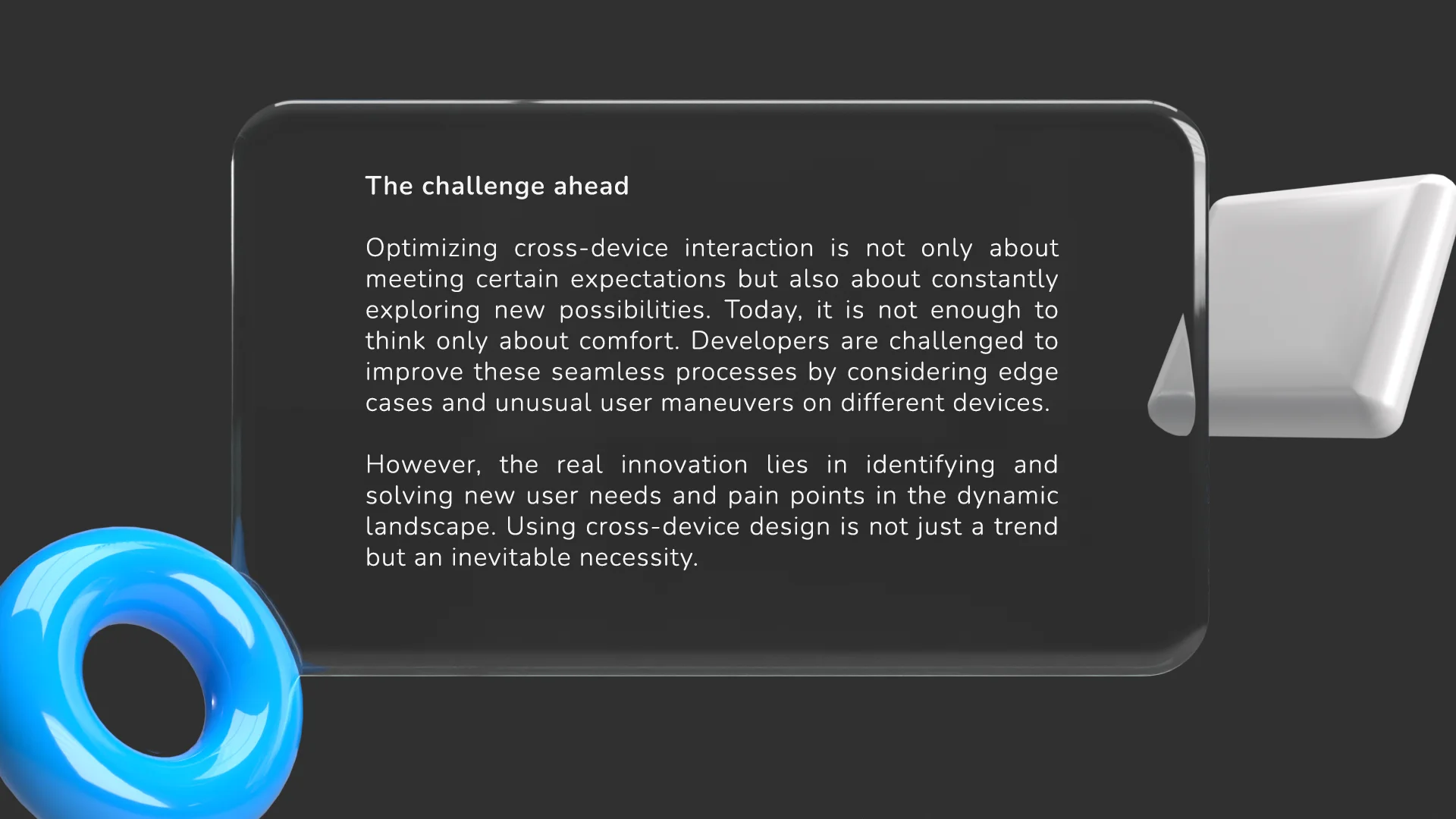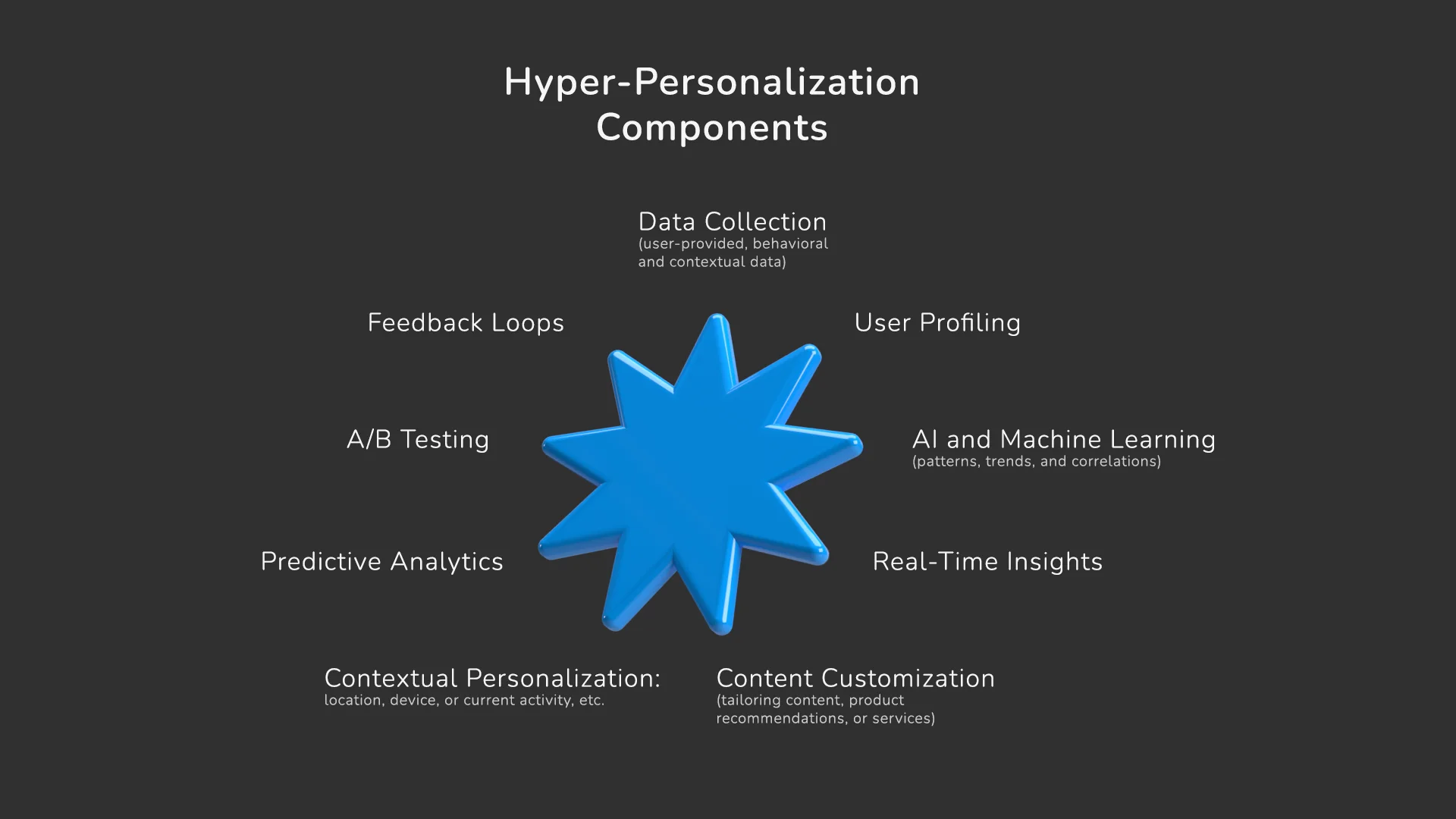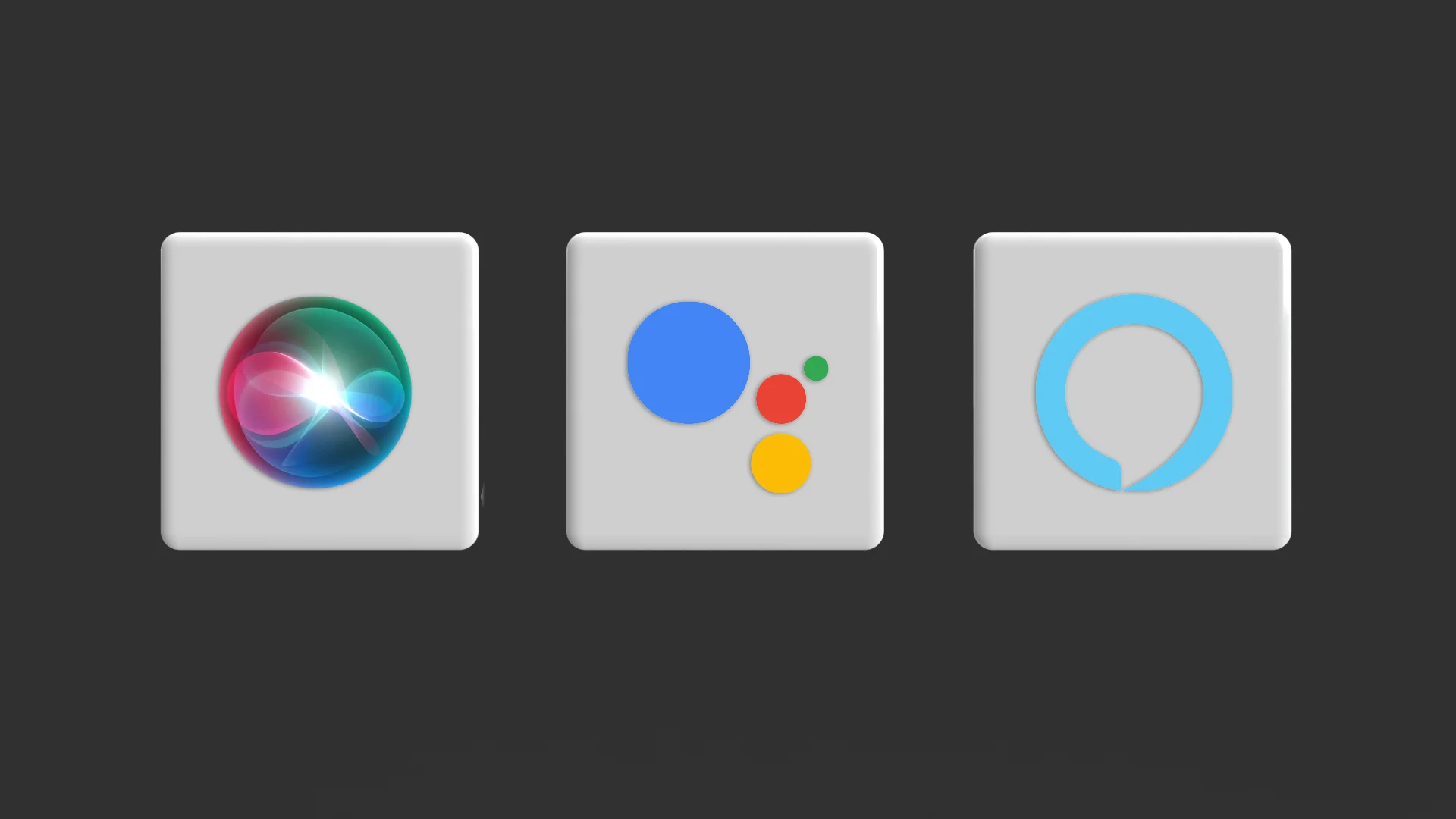Top 5 UX Trends of The Year: Importance, Benefits, Pitfalls
20.10.2023
Exceptional user experience plays a critical role in any business's success. Starting with mobile banking and ending with interactive learning systems, UX design is the glue that keeps your product together.

UX design plays a critical role in shaping how users interact with digital products and services. This area is complex, dynamic, and rapidly evolving, so companies must embrace all the latest trends to navigate it efficiently.
In this article, we will explore several game-changing UX trends reshaping businesses’ digital presence. We will also take a look at the benefits and competitive advantages that such approaches bring to organizations. So, let’s start our journey!
Mobile-First Approach
Statistics show that more than 90% of users access the Internet using mobile devices, and more than 50% of traffic comes from such devices. Whether it is fintech or the healthcare industry, for many customers, access to services or products via a mobile device is critical.
Therefore, a mobile-first development approach is more than relevant. Developers should consider smartphone users’ needs at the first stages of software development. This applies to both mobile and web applications. Moreover, frameworks like Microsoft Blazor offer rich tooling to create responsive and flexible web apps using a mobile-first approach.
 Source: Exploding Topics
Source: Exploding Topics
How can businesses benefit from a mobile-first design approach?
It is also worth noting that such a strategy has several significant advantages for business.
- It allows developers to create a seamless experience that’s responsive on any device, no matter how people access the website.
- It helps to improve customer satisfaction and achieve a higher level of user engagement. This can be an effective part of the development strategy for companies seeking closer and better customer interaction.
- Since most people access websites and apps through their mobile devices, sooner or later, every company will have to consider adapting apps to these needs. Mobile-first design is about digital products optimized for such a request and flexible enough from the first steps, significantly saving money and time.
Good practices are using a more concise language, minimalistic and clean interface design, flexibility and adaptability of all interface elements. It’s also worth remembering that your users expect a certain quality when browsing websites, and they need to be able to access what they want easily and quickly. So, make sure your web product is fast enough and provides a pleasant user experience.
We have extensive experience in creating digital products with optimal UX design. And we will be happy to help you boost your business. Just contact us, and we will discuss solutions for your organization's specific needs together.
Cross-Device Experience
As we delve into the challenging and fast-changing landscape of UX design trends, we must mention cross-device experiences. Users demand a smooth experience of seamless transitions from one device to another. By the way, Apple’s ecosystem has significantly influenced this shift towards cross-device operability, where users effortlessly switch between their iPhone, iPad, and Mac.
In the coming year, we expect even more digital products to prioritize cross-device designs, ensuring users enjoy a consistent and reliable journey. This approach is all about the ability to move smoothly between different digital devices while maintaining a consistent and uninterrupted interaction with a product, service, or app. It makes your clients’ journey fluid and responsive, regardless of whether they use a smartphone, tablet, desktop, etc.
Let’s look at some examples of such a design. The first of them is Google Workspace. Whether you start an email on your smartphone or finish it on your desktop in the office, your experience remains smooth and seamless.
Another vivid example is Netflix. This streaming giant knows that viewers often switch between devices and pays special attention to their experience. That is why users can start watching a series on a smart TV, continue on a tablet, and finish on a laptop. Meanwhile, Netflix provides a smooth transition, even remembering where the user left off.
How can businesses benefit from a cross-device experience?
Here are some of the main advantages of this UX trend.
- Cross-device experiences keep users engaged, allowing them to pick up where they left off, regardless of the device they are using. This continuous engagement increases user satisfaction and loyalty.
- Users can start shopping on one device and complete the purchase on another. This significantly reduces cart abandonment rates. E-commerce businesses, in particular, benefit from cross-device experiences.
- Such compatibility allows businesses to reach a wider audience. Users may discover a product on their mobile device and continue using it on a larger screen, expanding the potential user base.
- Businesses can gather more comprehensive data about user behavior and preferences as users interact with a product across various devices. This is essential for marketing strategies and proper personalization. Moreover, tracking user interactions on different devices helps tailor your content and features to align with users’ needs.
Cross-device experience is also critical for maintaining a consistent user interface and brand identity, reinforcing brand recognition and trust.

Micro-Interactions
In UX design, even the smallest things can make a dramatic impact. Subtle, almost imperceptible animations or responses that occur when users engage with a digital interface – all of this built real experience. These tiny interactions might seem insignificant, but they are at the forefront of UX research, and for good reason.
Micro-interactions are often understated responses that a user interface provides when you perform a specific action. They are “microscopic” building blocks of user experience. These can include something as simple as a button changing color when hovered over, a heart animation when you like a post, or a subtle vibration when you receive a message on your smartphone.
Why are micro-interactions important?
Apart from being your way of honoring and caring for your client, such details are absolutely practical. They create a sense of responsiveness, letting users know that their actions have been registered and keeping them engaged and informed as they navigate through a digital interface.
These tiny animations also can guide users through a process, helping them understand how to interact with a system. For example, a loading spinner lets users know that a task is in progress, preventing frustration.
Moreover, micro-interactions align with human psychology. They mimic real-world interactions, provide feedback that feels natural to users, and inject personality and charm into a user interface, making it more enjoyable and memorable for users.
They can also serve as error preventers. For instance, a subtle shake animation when users enter incorrect login credentials signals that something is amiss, reducing the likelihood of repeated errors.
Ready to enhance your cross-device UX? Connect with our experts to unlock the full potential of your digital product!
How can businesses benefit from using micro-interactions in UX design?
Here are some examples of advantages that micro-interaction brings to businesses.
- Engaged users are more likely to return. Micro-interactions keep users coming back and improve their retention by creating a more enjoyable and interactive experience.
- Thoughtfully designed micro-interactions reinforce a brand’s identity. The way these interactions look and feel can be unique to a brand, helping it stand out.
- They can also be useful for data collection. For example, when users “favorite” an item, a heart animation can provide valuable insights into user preferences.
- They are a part of the user-centered design concept. Businesses prioritizing micro-interactions show users that they care about the little details, fostering trust and loyalty.
As you can see, micro-interactions are like the friendly nods and gestures of a skilled host at a party. They make clients feel welcome, informed, and engaged, leaving a lasting impression long after the interaction is over.
Hyper-Personalization Using AI
The days of one-size-fits-all digital experiences are definitely gone. Today, users desire tailor-made interactions that resonate with their unique needs, preferences, and behaviors.
Hyper-personalization is about taking personalized experience and user preferences research to the next level. It’s not just about addressing users by their first names or remembering their past interactions. It is the art of fine-tuning experiences that feel like a bespoke suit, meticulously crafted for an individual.

Why is hyper-personalization important?
To begin with, hyper-personalization keeps users engaged by offering content, products, or services that precisely match a user’s interests. It is like having a knowledgeable concierge guiding users through your digital product capabilities and offers.
Also, when users see content or products that align with their tastes and needs, they are more likely to convert. This leads to higher conversion rates and increased sales for businesses.
Moreover, clients appreciate experiences that understand and cater to their preferences. Hyper-personalization fosters user satisfaction, translating into brand loyalty and positive word-of-mouth.
It is also a great tool for getting valuable data-driven insights. How? Collecting and analyzing user data for hyper-personalization provides a deeper understanding of user behavior, enabling better-informed decisions.
How can businesses benefit from hyper-personalization in UX design?
Let’s look at real-life examples, and Netflix is one of them. It is a shining illustration of how hyper-personalization can boost revenue. They keep viewers hooked by recommending content based on users’ watch history and ratings, resulting in increased subscriptions.
Businesses can fine-tune their marketing strategies. Tailored recommendations and personalized emails lead to higher open and click-through rates. On the other hand, insights gathered from hyper-personalization efforts can shape product development. Businesses can create new features or offerings based on real user needs and preferences.
But the most important thing to pay attention to is the AI advantage. Using artificial intelligence (AI) and machine learning shapes hyper-personalization’s potential in a new way. These technologies enable the analysis of vast datasets to customize content and features to an individual’s specific interests and needs.
For example, imagine an e-commerce platform that not only recommends products based on past purchases but also considers a user’s real-time location, weather conditions, and recent online behavior to suggest the perfect item at the perfect moment.
As UX designers and researchers delve deeper into the world of hyper-personalization, users can look forward to experiences that are not just engaging but also deeply meaningful. In the digital world, where attention is a prized commodity, businesses that master hyper-personalization will develop lasting connections with their audience.
Voice Interfaces
Voice interfaces are the way to change users’ interaction with digital products drastically. This trend is all about leveraging the capabilities of voice assistants, smart speakers, etc., to provide exceptional experience and full accessibility to clients. So, businesses from different areas should recognize the importance of integrating Voice User Interfaces (VUIs) into their products and services.

Why are voice interfaces important?
Insider Intelligence’s research predicts that nearly half of the US population will be using voice assistants and smart speakers by 2026. This upward trend indicates a significant shift in user behavior and expectations.
Voice interfaces offer a hands-free and efficient way for users to engage with technology. They provide accessibility to a wider audience, including those with disabilities or limited mobility. This trend is crucial for businesses aiming to stay relevant in an increasingly digital world.
How can businesses benefit from VUIs in UX design?
Companies like Apple, Google, and Amazon have pioneered voice-activated technology with their virtual assistants (Siri, Google Assistant, and Alexa). While newcomers may enter this space, UX designers should consider integrating these established services when relevant to enhance user experiences.
Furthermore, the integration of voice assistants provides very specific advantages for businesses. Let’s take a look at them.
- As we have already mentioned, VUIs make products and services accessible to a broader audience, including individuals with disabilities. This is especially important as accessibility is the main direction of tech evolution.
- VUIs can boost user engagement by providing a more natural and convenient interaction method. Mobile or web apps with such features are exciting and grab users’ attention.
- Voice interfaces and their capabilities can give businesses a competitive advantage by offering cutting-edge, user-friendly experiences.
Incorporating voice interfaces challenges UX designers to create intuitive and engaging voice experiences. Efficient and user-friendly VUIs can set products and services apart in the market.
The future of UX design is increasingly vocal, and embracing this trend can open new doors for businesses in various industries. And the devspiration team will be pleased to help you with this. Just contact us now.
Consider Ensuring Digital Inclusivity Through Accessibility
Accessibility in UX design is not just a moral imperative but a legal one as well. We can consider it as a long-term trend that will never become irrelevant. Accessibility encompasses technical requirements that go beyond aesthetics, and its main goal is to ensure websites function seamlessly with assistive technologies. The simplest examples are screen readers that read content aloud or screen magnifiers that enlarge it.
Accessibility guidelines – WCAG 2.2
Web Content Accessibility Guidelines (WCAG) is the set of requirements for any company with a digital presence. Today, it is essential to adhere to such guidelines as they also have legal implications, so UX designers are currently monitoring whether the updated WCAG 2.2 is ready.
A new version of the Web Content Accessibility Guidelines is on the horizon, with WCAG 2.2 expected to be finalized by September 2023. These guidelines aim to make websites, apps, and other digital platforms even more accessible for people with disabilities.
The significance of accessibility trend
Why is accessibility a critical aspect of web design? There are several compelling reasons:
- In the US, most websites fall under either the ADA or Section 508 of the Rehabilitation Act. Ignoring accessibility requirements can lead to legal issues, including lawsuits.
- Diversity, Equity, and Inclusion (DEI) are mandatory. Accessibility isn’t just about compliance –it is about ensuring equal access for everyone. DEI principles extend to digital spaces, especially in a post-pandemic world where digital access is paramount.
- It is one of the most prominent business opportunities. In the US, there are approximately 61 million people with disabilities, not to mention the 71 million Baby Boomers who share similar challenges. Meeting their needs represents a significant market opportunity.
Despite the legal and ethical imperatives, compliance remains a challenge. Recent studies indicate that more than 96% of home pages were not compliant, demonstrating the depth of the issue.
Accessibility requirements: example for US companies
The Web Content Accessibility Guidelines is the standard in the US. These guidelines break down into four principles: Perceivable, Operable, Understandable, and Robust.
- Perceivable – information must be presented in ways users can perceive, including text alternatives for non-text content and multimedia captions.
- Operable – the interface should be operable through a keyboard, offer sufficient reading time, avoid content that triggers seizures, and assist with navigation.
- Understandable – information and the user interface must be comprehensible, with readable text, predictable content, and error prevention.
- Robust – content should remain accessible as technologies evolve, ensuring compatibility with future user tools.
Incorporating these principles into the design not only fosters inclusion but also guards against legal repercussions and unlocks business potential.
Wrapping Up
UX design is a fast-evolving and exciting area that can really make a difference. We have explored several key trends defining how we interact with digital products and services, but there are many more. At devspiration, the development team leverages different approaches and trends in accordance with the specific business needs and requirements.
To conclude, businesses must prioritize responsive and mobile-friendly design to enhance user satisfaction and engagement. Cross-device experiences are also important as they offer numerous benefits, including increased user engagement, reduced cart abandonment rates, and the ability to reach a wider audience.
UX experts should also pay attention to micro-interactions that guide users, provide feedback, and enhance the overall user experience. On the other hand, hyper-personalization, driven by AI and machine learning, is transforming digital experiences through tailoring content and features to individual preferences.
Another essential trend is VUI. Voice interfaces are revolutionizing user interactions, offering hands-free and accessible experiences. As voice assistants become increasingly popular, integrating VUIs into products and services is essential. This trend provides accessibility, user engagement, and a competitive business advantage.
Lastly, accessibility in UX design is worth special attention. This is a moral obligation and a legal requirement at the same time. The upcoming WCAG 2.2 guidelines underscore the importance of ensuring digital inclusivity. Ignoring accessibility can lead to legal issues and missed opportunities in a market that includes millions of people with disabilities.
As you can see, adding these UX trends into your digital strategy can improve user satisfaction, boost engagement, and set your business apart in an increasingly competitive landscape.
If you’re looking for experts who can use these trends and optimize your digital product’s UX design, we will gladly assist you. Just contact us for expert guidance and tailored solutions. Together, we can unlock the full potential of your digital offerings.







